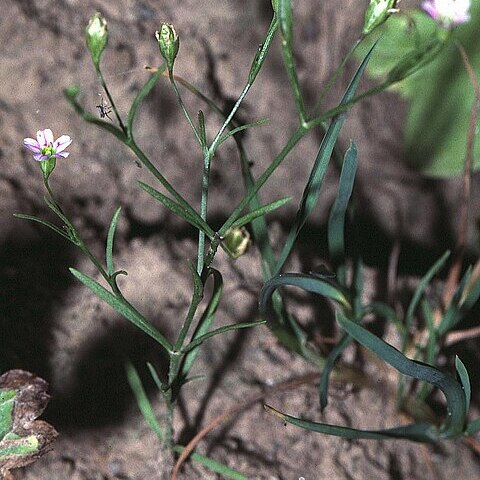Plants annual. Stems erect, dif-fusely much-branched through-out, 0.4-3(-4) dm, proximally puberulent, distally glabrous, or occasionally glabrous throughout. Leaves cauline, bases not clasping; blade linear, (0.2-)0.3-3.2 cm × 0.2-2(-3) mm, not glaucous, apex acute to acuminate. Pedicels 2-20 mm, glabrous. Flowers: calyx 2-4 mm, lobes glabrous, apex rounded to obtuse; petals pink or rarely white, 3.5-6(-10) mm. Capsules ellipsoid-ovoid. Seed coats minutely tuberculate. 2n = 30, 34 (both Europe).
Diffusely branched, slender annual, 5–40 cm, glabrous above, often puberulent below; lvs 5–15(–25) × 1–2(–3) mm, linear or nearly so, acute; pedicels 1–2 cm, spreading or ascending from the axils of all but the lower lvs; cal 2.5–4 mm, ± obconic, its lobes ciliate-margined; pet oblanceolate, 6–10 mm, emarginate, pink or white; fr oblong, slightly surpassing the cal; ovules 24–36; 2n=34. Native of Eurasia, found as a weed here and there in the n. part of our range. Summer.

